“It’s the potential for all 30,000 fans in the stadium to participate in the same shared experience that’s contextual to where they are sitting within the facility,” he said.
Left Field Labs is a digital agency dedicated to solving our common challenges through uncommon creativity. Our team of over 100 designers, developers, and strategists has launched hundreds of digital products and experiences – from VR and websites to apps and experiential installations – for clients, such as Google, Discovery, Android, Estée Lauder, Uber, and Disney.
Want to explore more of the frontiers of marketing? View more of our work on the cutting edge of AI and immersive brand experiences here.
Google set out to create a 360° event-scale augmented reality (AR) experience at CES that would help attendees experience its presence in a whole new dimension. Google partnered with Left Field Labs to blend its physical booth location with a digital overlay, focused on bringing helpful and contextual information to attendees, as well as delightful moments.
LFL leveraged Google’s latest AR technologies in partnership with Adobe to inspire developers, creators, and brands at Google’s CES booth. The team aimed to demonstrate how AR has the potential to solve everyday challenges, whether orienting yourself around a busy environment, getting the scoop on more demos to see, finding transportation, or helping with decision making.
First, LFL used Google’s Geospatial Creator, powered by ARCore and Google Maps Platform, in Adobe Aero to create an effective storyboard that integrated physical and digital elements seamlessly for the AR experience. LFL then built Google’s beloved Android Bot into the AR experience as a guiding figure with simple yet richly expressive interactions. Taking an agile approach, LFL iterated and tested on a wide range of Android and iOS mobile devices to ensure smooth performance for attendees.
The AR guide to Google on Android at CES 2024 was a successful “show rather than tell” experience that helped attendees enjoy the space with immersive surprises along the way. The experience was activated nearly 9,000 times over the four-day event.

Email Beth Sidhu, Chief Brand and Communications Officer at Stagwell, to discuss how we can support your organization’s digital goals.
In the News, Press Releases
Jul 09, 2025

Artificial Intelligence, In the News, Marketing Frontiers, Press Releases, Stagwell Marketing Cloud, Tech
Jun 12, 2025

In the News, Marketing Frontiers, Press Releases, Stagwell Marketing Cloud, Tech
Jun 11, 2025
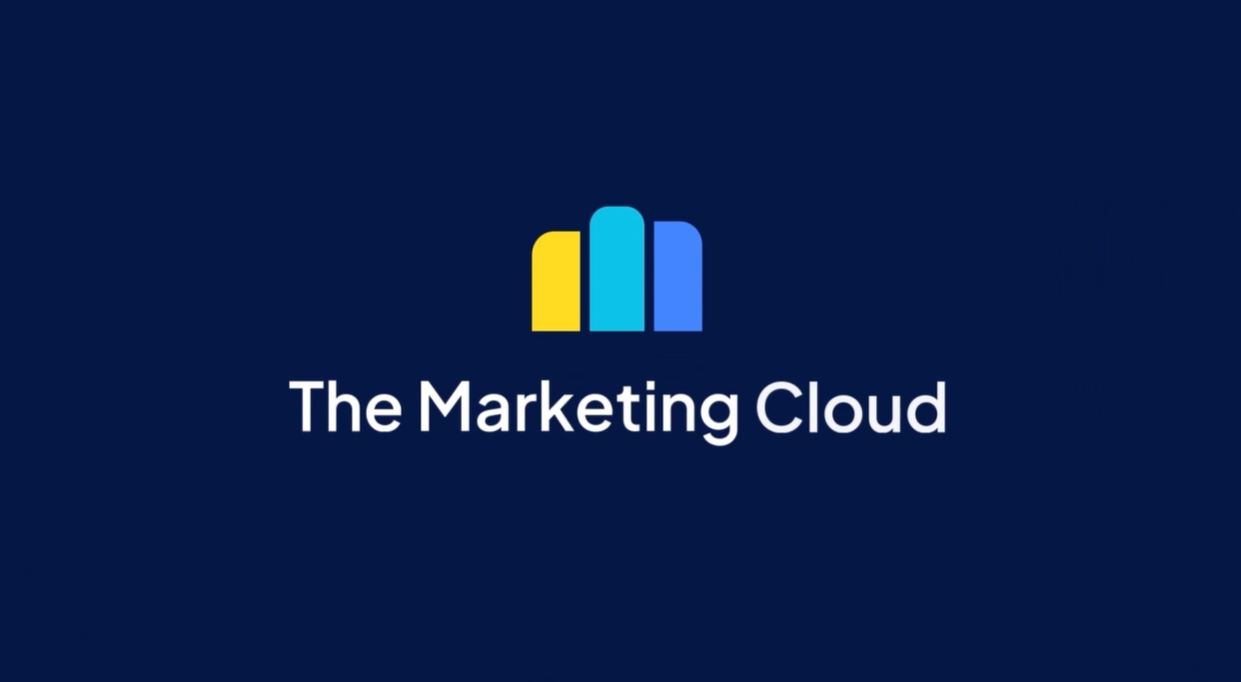
ARound is a first-of-its-kind stadium-level shared augmented reality platform within the Stagwell Marketing Cloud. ARound keeps audiences engaged by capturing their attention through immersive, interactive and shared experiences with fellow fans across the venue. Where other AR products offer isolating, singular experiences, ARound’s massive multi-user AR – which uses 3D spatial computing to localize content – redefines what it means to be part of a connected fan experience.
Want to explore more of the frontiers of marketing? View more of our work on the cutting edge of AI and immersive brand experiences here.
Recognizing that smartphones are already part of the modern spectator experience, the Cleveland Cavaliers aimed to transform these devices from potential distractions into essential components of the game action. The objective was to introduce mass gamification and real-time visualizations to the NBA Playoff experience through Stagwell’s ARound, making every fan and brand feel like a bigger part of each magical moment.
ARound implemented its cutting-edge augmented reality (AR) platform at Rocket Mortgage FieldHouse, transforming spectators’ smartphones into interactive gameday devices. This technology allowed fans to interact with larger-than-life players and mascots, live game animations, and immersive AR challenges directly linked with other fans and the ongoing action. Additionally, sponsored content was integrated into the AR experiences, enabling brands like Cliffs to engage with fans through captivating and interactive games right on the court.
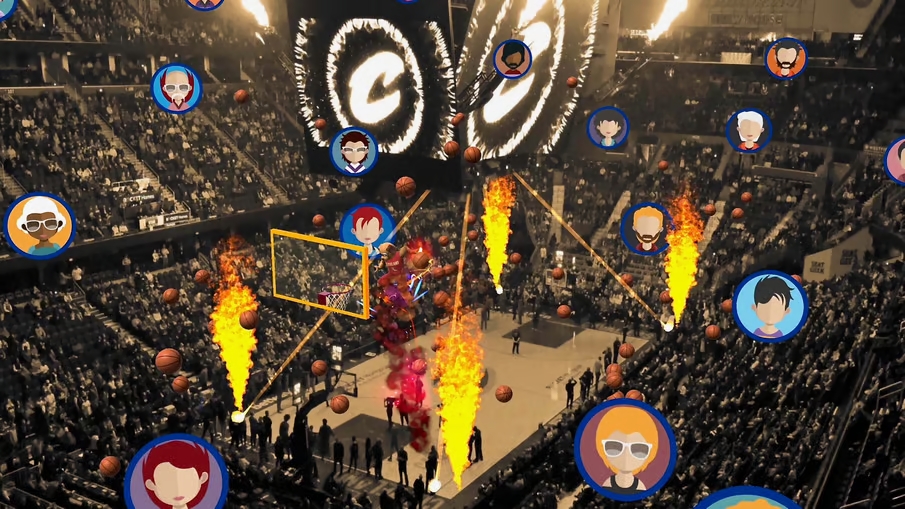
The implementation of ARound’s AR technology led to a dramatic increase in fan engagement, with spectators actively participating for an average of 14 minutes per game. By making smartphones an integral part of the live event, the Cavaliers enhanced the game-day experience, deepened fan immersion, and created new opportunities for innovative sponsor activations. This strategic use of AR technology enriched the playoff atmosphere, ensuring fans were not just spectators but active participants in the excitement of NBA games.
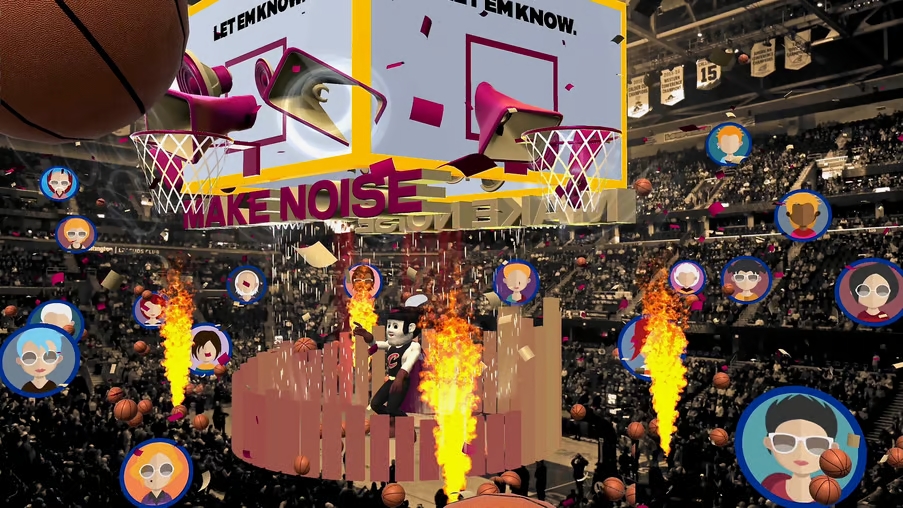
Email Beth Sidhu, Chief Brand and Communications Officer at Stagwell, to discuss how we can support your organization’s digital goals.
In the News, Press Releases
Jul 09, 2025

Artificial Intelligence, In the News, Marketing Frontiers, Press Releases, Stagwell Marketing Cloud, Tech
Jun 12, 2025

In the News, Marketing Frontiers, Press Releases, Stagwell Marketing Cloud, Tech
Jun 11, 2025

hello@stagwellglobal.com
Technology is reshaping sports and sports marketing just as much as the players — from loyalty NFT plays to stadium-sized augmented reality experiences. We met with brand leaders on the ground at CES 2023 from the Los Angeles Rams, Minnesota Twins, and Samsung among others to talk about the emerging tech driving innovation and sponsorship opportunities across their properties. Catch their insights below and visit YouTube to see all of our CES 2023 Content Studio interviews with top brand and business leaders on the innovation agenda for the year ahead.
– Alexis Williams, Chief Brand Officer, NA and Fotoulla Damaskos, EVP, Strategy and Innovation, National Research Group
The Rams made history this Christmas with the world’s largest augmented reality snowball fight, presented in SoFi Stadium during the Rams-Raiders game. For the Rams, it’s all about innovation on an off the field – and how brand and technology partners can reinforce their exploration of new consumer experiences. Hear from Rams Chief Commercial Officer Jennifer Prince about how the team fuels its larger-than-life fan experiences.
A baseball team with an innovation accelerator? Yep. The Minnesota Twins want to bring always-on experimentation to the stadium, to help bring baseball into the 21st century. Hear from Chris Iles on the Twins’ mission to be the most innovative team in sport – and their experiments in AR, embodied audio, and spatial computing.
The Infinity Screen in SoFi Stadium is a behemoth 70,000 sq. foot digital display powered by Samsung – and just one of an array of dazzling digital out-of-home experiences Samsung helps support across sporting properties. Hear from Samsung’s Harry Patz about how advancements in screens are re-shaping in-stadium entertainment.
In the News, Press Releases
Jul 09, 2025

Artificial Intelligence, In the News, Marketing Frontiers, Press Releases, Stagwell Marketing Cloud, Tech
Jun 12, 2025

In the News, Marketing Frontiers, Press Releases, Stagwell Marketing Cloud, Tech
Jun 11, 2025

Maury Brown,
Forbes
hello@stagwellglobal.com
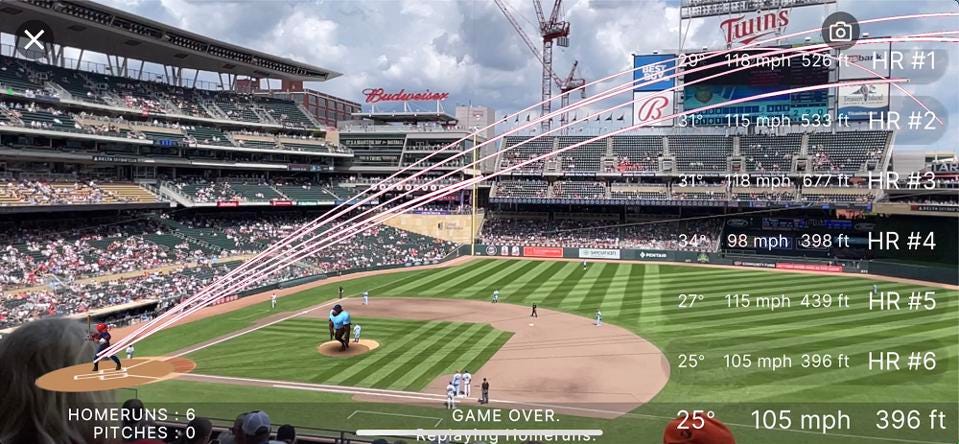
It largely flew under the radar on Monday when the Minnesota Twins announced that they had launched ARound – what is believed to be the first shared augmented reality application for live sports – for use at Target Field. While a first, the pilot app could open the door to either value-add traditional sponsorship deals, or open avenues for new sponsors. If the application gains traction, it could create a land rush for not just the other 29 clubs in Major League Baseball, but across the sports property landscape.
ARound is part of Stagwell, a publicly traded high-tech company, that will allow fans to aim their phones at Target Field during lulls in the action, and play games with others at the ballpark. Targeted largely to a younger audience, the concept is not too dissimilar from augmented reality games you may have seen at the movie theater before the previews as part of Noovie. The difference here is it’s not just a single user, but many within Target Field. Apps that will be made available include as BatterUp, Blockbuster, which the Twins and the developers showed me as users throwing digital items at towers and knocking them down, and a game called Fishing Frenzy. Josh Beatty, the founder and CEO of ARound as well as Chris Iles, the Twins’ senior director of brand experience & Innovation talked to me about the rollout that has been in the works for a little over a year.
“What I think Josh has built has some real power and some real legs, because it is able to be aware of everyone around you that is using the app at the same time, creating a shared experience and creating some context around an event that frankly has never been done before,” said Ilse. So that excited me and the Twins as it had never been done before.”
Beatty informed that no user data is collected. No one goes through a sign-up process to use the app. And that the infrastructure is large enough to support tens of thousands of users.
Which gets one thinking? Besides entertaining kids with games and keeping them in their seats, what other value does the app have from a business perspective?
For one, the idea that other types of use cases could be created within the platform. Both Iles and Beatty mentioned that it’s possible to create an experience in which player stats could hover over a player in real-time or other ways to engage the dedicated baseball fan in attendance.
But what seems most intriguing from a business standpoint is that while the initial rollout is skinned as just gameplay for a younger demo, it is fully capable of having the games be skinned in a way that monetizes it.
Ilse and the Twins see the platform as a way to create closer connections to the people and places. “One thing we realized is that you kind of have to have a big audience to make that happen,” said Iles adding that the Twins were receptive from the first conversation, understanding that this is a technology that has a place as value to be added to the ballpark experience.
“To the teams, the fans, and the sponsors,” it adds to sports entertainment.
It’s here that Twins may be hitting on something that is more than just adding to the game experience, but opening up new avenues to the bottom line: sponsors.
The initial rollout is not skinned with any sponsors, but Beatty said that the design of the apps for the Twins takes that in mind.
“I would say [the platform] is tailor-made for sponsorship,” said Iles. “We are launching this sponsor agnostic because we do want to have a clean test of the technology to see how fans interact with it. I’ve always thought that before you can add the sponsorship component you need to show it as it is and let potential sponsors see it the same way. So, we need to prove this thing out. But we feel that it will work well for our sponsors.”
Likely, a shared AR app at the ballpark is not going to garner huge returns in the sponsorship space initially. But it largely depends on other applications that are developed in the future. It either becomes an additional way to activate sponsorship in a larger deal for a client, or brings in new sponsors. Either way, the Twins are hitting on an untapped revenue stream.
For Stagwell, the technology isn’t limited to just at the ballpark. After all, games can be watched through traditional television and streaming.
“Not only are we looking to enhance the in-stadium experience, but with our technology, we can actually bridge this to the at-home viewer as well,” said Sarah Arvizo of Stagwell. “We can bring all the things that are happening with the AR platform in the stadium to their coffee table. And so as they are watching a game, they can have that energy and excitement that is in the stadium, but take that with them wherever they go.”
In the News, Press Releases
Jul 09, 2025

Artificial Intelligence, In the News, Marketing Frontiers, Press Releases, Stagwell Marketing Cloud, Tech
Jun 12, 2025

In the News, Marketing Frontiers, Press Releases, Stagwell Marketing Cloud, Tech
Jun 11, 2025

Gita Sitaramiah,
Star Tribune
hello@stagwellglobal.com
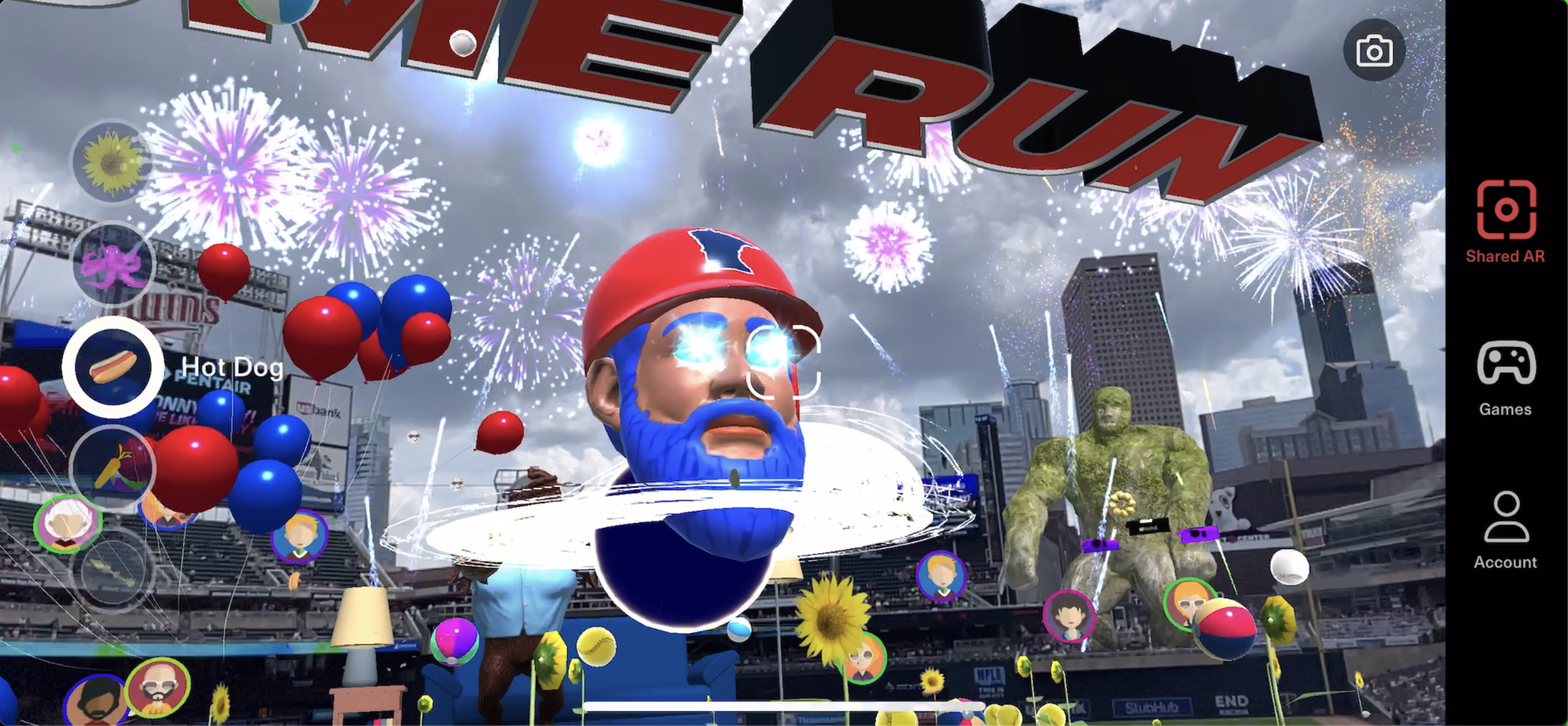
There will soon be one more reason to check your smartphone between pitches at Minnesota Twins games.
The Twins are introducing an app called ARound that will depict promotions and games to smartphone users at Target Field. The effort is believed to be the first use of augmented reality at a live sports venue.
Major League Baseball teams, including the Twins, have been upping the promotions and experiences in recent years as they face dwindling attention spans for the average three-hour games.
“We know the die-hard fans are buying their tickets and we know they’re bringing younger fans with them that are not necessarily following every pitch, every stat,” said Chris Iles, senior director of brand experience and innovation for the Twins.
“This is one of the latest iterations that we’re using to really attract that younger, more diverse fan and bring them into baseball,” he said.
Unlike virtual reality, which creates a totally artificial environment, augmented reality users experience a real-world environment with generated perceptual information overlaid on top of it.
ARound, part of the New York-based Stagwell digital marketing company, uses 3-D spatial computing to localize content to individual users throughout the venue, enabling Target Field attendees to see the same real-time 3-D effects and participate in shared experiences.
Using the ARound app, fans point their smartphone at the field to open up a universe of multi-user augmented reality games such as BatterUp, Blockbuster, and Fishing Frenzy — all designed to be played by interfacing with the physical ballpark and fans in real time.
The Twins aren’t initially paying for the app. Both the Twins and ARound see potential for sponsorship and add-on opportunities to generate revenue.
“People are coming to the ballpark to feel closer to the game, to other fans, to the players, and what we’re doing is removing all the barriers where people can interact with fellow fans, with the produced experiences by the Twins, see the player become larger than life, see relevant statistics,” said Josh Beatty, founder and chief executive of ARound.
Initially, the app will be more geared to the casual fan. Future versions will be aimed at avid baseball enthusiasts.
Iles said what really intrigued him about the ARound app is that it creates a shared experience.
“It’s the potential for all 30,000 fans in the stadium to participate in the same shared experience that’s contextual to where they are sitting within the facility,” he said.
In the News, Press Releases
Jul 09, 2025

Artificial Intelligence, In the News, Marketing Frontiers, Press Releases, Stagwell Marketing Cloud, Tech
Jun 12, 2025

In the News, Marketing Frontiers, Press Releases, Stagwell Marketing Cloud, Tech
Jun 11, 2025

Torey Van Oot,
Axios
hello@stagwellglobal.com
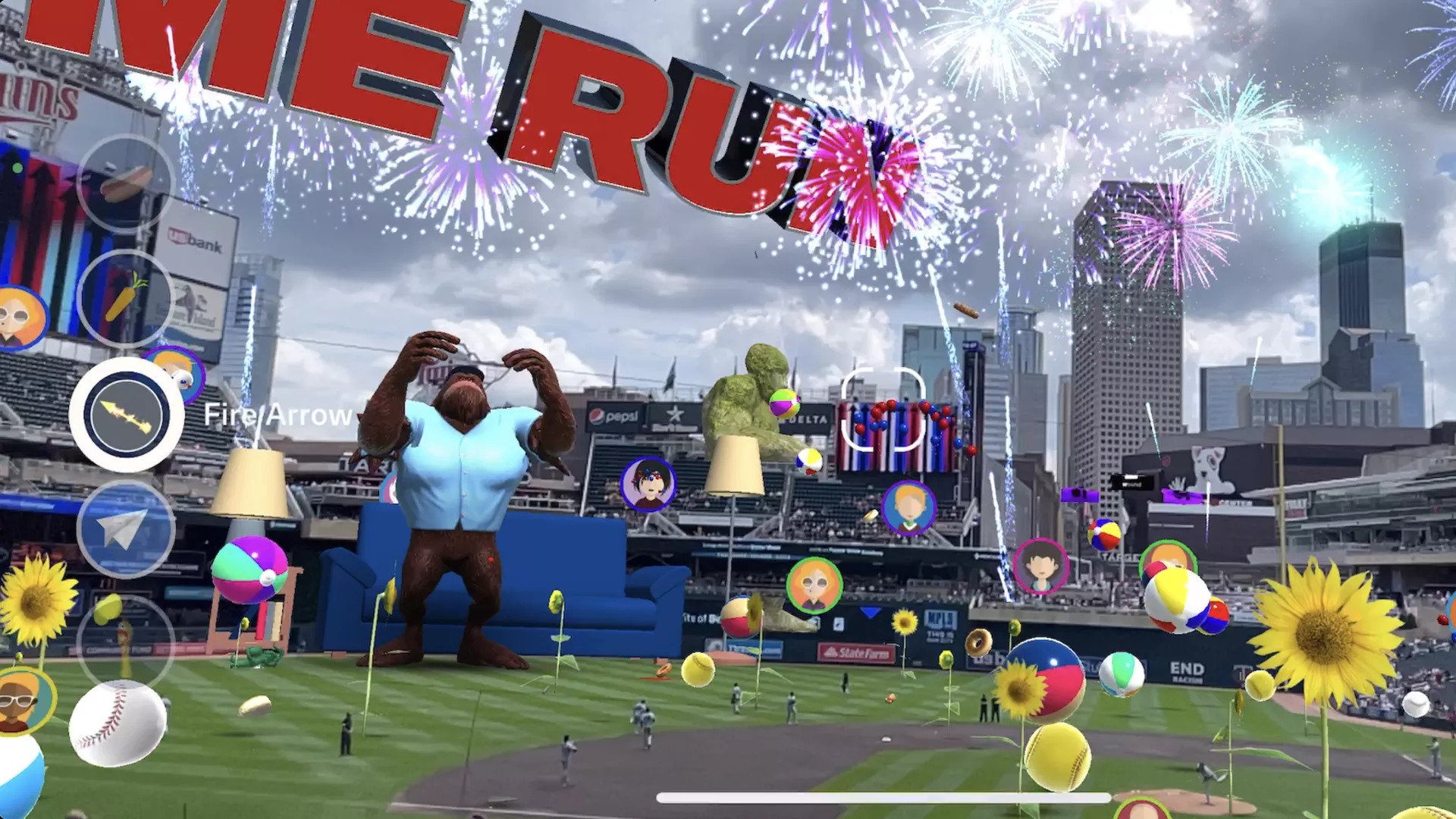
Target Field will look a little different to some phone-toting fans at future games.
What’s new: The Twins recently debuted a first-of-its-kind partnership with an augmented reality (AR) platform that allows attendees to play games and unlock special content tied to what’s happening on the field.
Between the lines: The app is one of several of MLB-wide efforts to attract — and engage — a broader fanbase amid an ongoing slump in ticket sales.
How to play: Download the ARound app. Once you arrive, point your phone at the field and see what happens.
In the News, Press Releases
Jul 09, 2025

Artificial Intelligence, In the News, Marketing Frontiers, Press Releases, Stagwell Marketing Cloud, Tech
Jun 12, 2025

In the News, Marketing Frontiers, Press Releases, Stagwell Marketing Cloud, Tech
Jun 11, 2025

Originally released on
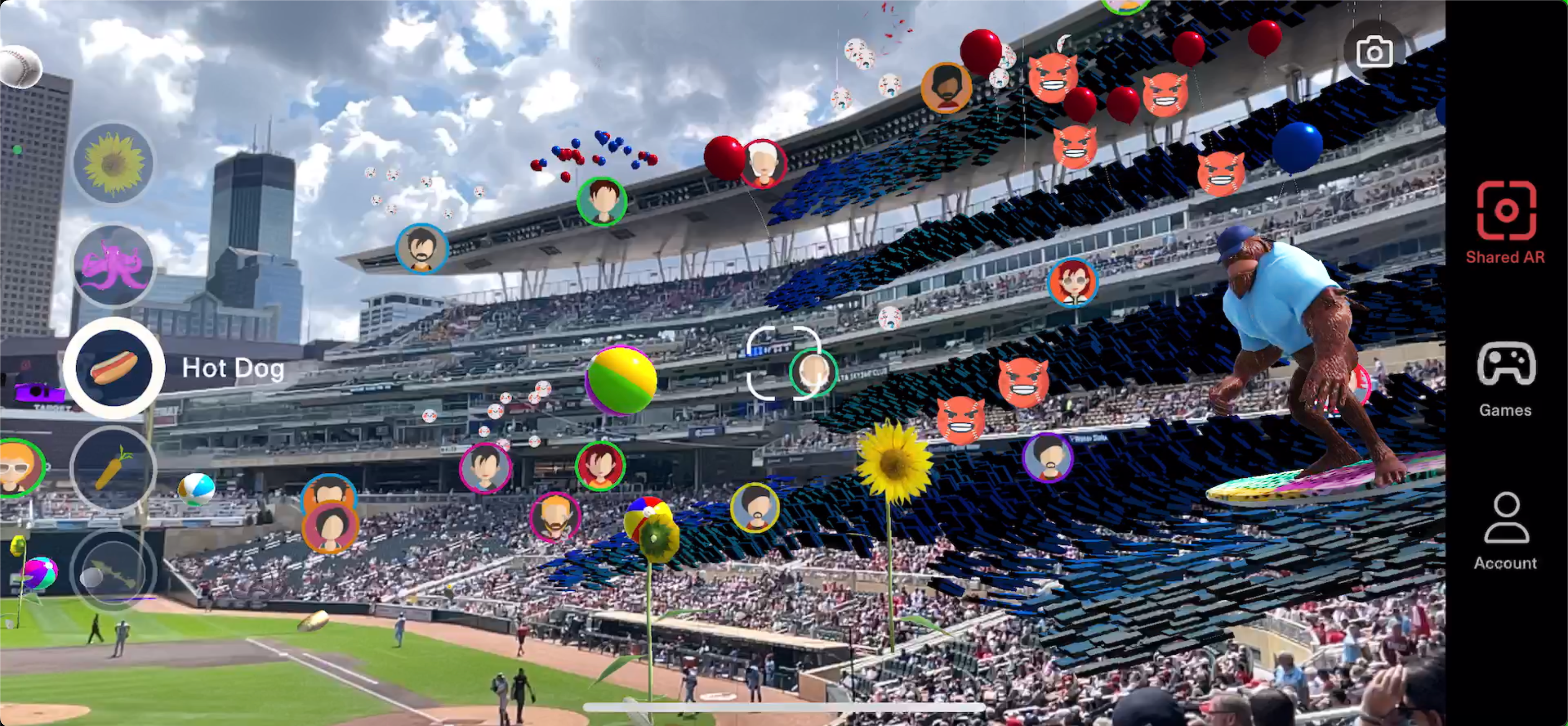
ARound’s Stadium-Level Technology Signals Opportunity for Sports Teams, Entertainment Venues and Brands to Transform the Fan Experience
MINNEAPOLIS and NEW YORK, Aug. 22, 2022 /PRNewswire/ — Today, the Minnesota Twins announced the public launch of ARound, a first-of-its-kind stadium-level shared augmented reality (AR) platform, at Target Field in Minneapolis. This first-ever experience in a live sports setting keeps audiences engaged by capturing their attention during game downtime through immersive, interactive and shared experiences with fellow fans across the venue.
ARound, part of Stagwell (NASDAQ: STGW), uses 3D spatial computing to localize content to individual users throughout the venue, enabling Target Field’s 40,000 attendees to see the same real-time 3D effects and participate in the same shared experiences. Using the ARound app, fans point their smartphone at the field to open up a universe of multi-user AR games such as Batter Up, Blockbuster, and Fishin’ Frenzy – all designed to be played by interfacing with the physical ballpark and fellow fans in real time.
“We’re excited to introduce our fans to this never-before-seen technology as we continue to evolve and enhance the Target Field experience,” said Minnesota Twins Senior Director, Brand Experience & Innovation Chris Iles. “Part multi-player video game, part augmented reality, with the ability for future expansion into an interactive next-gen stats platform, we believe what we’ve built with ARound will provide fans a next-level experience available only at Target Field.”
“Current AR platforms isolate users in singular experiences. ARound believes massive, multi-user AR enables a host of creative opportunities to redefine what it means to be part of a connected fan experience,” said ARound Founder and CEO Josh Beatty. “Be it a player, a mascot, a brand, a play or even another fan, ARound captures people’s attention and brings them closer to what’s right in front of them – during times they might otherwise be unengaged and on their phones – turning distraction to interaction and enhancing their overall experience.”
Fans can see and interact with real-time content led by action on the field, such as after homeruns, mascot races, or when the Twins take the field. During natural downtime, users can compete against their friends or fans in other sections to see who can knock down the most virtual blocks in the real-life outfield by throwing virtual baseballs or hot dogs at the structure.
“Shared augmented reality is the next frontier that sports teams, brands and other organizations should adopt as they look for ways to engage their audiences,” said Stagwell Chairman and CEO Mark Penn. “At Stagwell, we don’t just talk about the next frontiers of marketing and technology – we build them, and support founders through their growth.”
ARound was the winner of Stagwell’s annual “Shark Tank” innovation competition which invests in new product ideas proposed by the network’s 13,000+ employees. ARound is part of the Stagwell Marketing Cloud, a proprietary suite of SaaS and DaaS tools built for the in-house marketer, spanning campaign ideation to activation and analysis. Products within the cloud include PRophet , a predictive AI platform for PR professionals; Koalifyed, an end-to-end influencer management platform; the Harris Brand Platform, delivering competitive brand intelligence; and more.
Journalists interested in covering the launch can access the press kit here.
Stagwell is the challenger network built to transform marketing. We deliver scaled creative performance for the world’s most ambitious brands, connecting culture-moving creativity with leading-edge technology to harmonize the art and science of marketing. Led by entrepreneurs, our 13,000+ specialists in 34+ countries are unified under a single purpose: to drive effectiveness and improve business results for their clients. Join us at www.stagwellglobal.com.
The Minnesota Twins are a Major League Baseball team competing in the Central Division of the American League. The franchise has been a staple of the Minnesota sports and philanthropy scene since moving to the state in 1961. In addition to two World Series titles (1987 and 1991), the Twins have won 12 Division Championships (1969, 1987, 1970, 1991, 2002, 2003, 2004, 2006, 2009, 2010, 2019 and 2020) and three American League pennants (1965, 1987 and 1991). Since 2010, the Twins have played their home games at the award-winning Target Field in downtown Minneapolis. In addition, the Minnesota Twins Community Fund donates more than $1 million annually to benefit youth baseball and softball across Twins Territory. For additional information on the Minnesota Twins, please visit: twinsbaseball.com.
Media Contacts:
Minnesota Twins
Matt Hodson
MattHodson@twinsbaseball.com
ARound
Sarah Arvizo
pr@stagwellglobal.com
In the News, Investments & Financials, Press Releases, Talent & Awards
Jul 08, 2025

In the News, Press Releases, Thought Leadership
Jun 10, 2025

Events, In the News, Press Releases, Talent & Awards
Jun 05, 2025
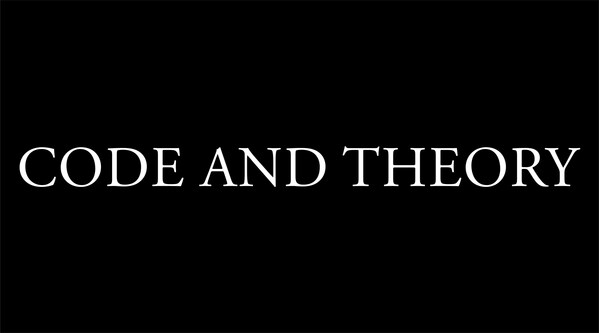
Rico Cipriaso, SVP, Digital Strategy and Transformation
and Eric Ong, VP, Technical Director, Concentric Health Experience
AR and mixed-reality are powerful tools for enhancing visualizations for patients and providers in healthcare marketing.
More immersive digital experiences can drive empathy, helping accurately model experiences and expected outcomes.
Scaling AR experiences to platforms consumers actively engage with is the top executional barrier for today’s brands.
Healthcare brands are ripe for the AR and mixed-reality revolution.
Everyone frets about their health. For someone newly diagnosed with a mispronounceable disease, picking up a prescription from the pharmacy for the first time is the culmination of multiple steps of worry, research, and grappling with challenging content. The pill or injection they receive is a reminder of hope and the possibility of a positive outcome. What if we could reinforce that hope with an experience that truly brings to life the sources of life-changing solutions?
Imagine: a routine scan from your mobile device at the start of your treatment unlocks a window into information about the disease, expected outcomes, and the support you need to get through it. With augmented and mixed-reality, healthcare brands have an opportunity to create dynamic visualizations for patients and providers that arm them with the education to drive better experiences and empathy to drive positive outcomes. AR/VR will help enhance both B2B and B2C efforts.
Imagine: a routine scan from your mobile device at the start of your treatment unlocks a window into information about the disease, expected outcomes, and the support you need to get through it.
Precision and depth of understanding are essential for healthcare practitioners. With AR and mixed-reality, these professionals’ learning tools can be enhanced with more multi-spatial visualizations of the body, cell and chemical interactions, and more, giving providers the confidence to act decisively in treatment.
We’ve seen that spirit extend beyond university and medical school settings; throughout the COVID-19 pandemic, public health professionals and medical influencers collaborated on mobile AR data visualization to help people better make sense of the large amounts of evolving COVID-19 data. Applying simple AR layers to social content can help bring life to flat charts with 3D animation, ultimately driving a more digestible and interactive educational experience.
We know emotional appeal is the magic sauce of good marketing. Enabling more immersive healthcare brand experiences in B2B and B2C with mixed-reality can give brands the tools to emulate patients’ experiences, model the impact of new drugs, products, and services, and help translate patients’ lived experiences. In our award-winning work for Sunovion, we leveraged VR to bring Lonhala Magnair’s in-person, interactive “Room to Breathe” to more healthcare providers. We rendered the home of a user of the drug in VR to showcase how each room of the house reflects the product’s unique features, including nigh silent administration, quick nebulization time, and convenient audiovisual feedback. The campaign grabbed the attention of prospective targets in an eye-catching way and helped place them in the patient’s shoes.
These mixed-reality approaches can also arm those suffering from chronic health ailments with tools for better communicating their needs and experiences. Excedrin’s 2016 Migraine Experience VR campaign used mixed-reality to model the audio, visual, and spatial effects a migraine can have on a patient, adding an experiential layer that helped drive added empathy. Their effort went beyond the VR headset experience to include a mobile app version that let anyone share the experience with loved ones. With the world returning to the office from remote work, healthcare brands will have many opportunities to generate compelling mixed-reality content about navigating and advocating for support in this evolving health environment.
Finally, B2B healthcare marketers exhibiting at trade shows can integrate mixed-reality into their product demonstrations and showcases to enhance the persuasive element of their presentations.
Exciting possibilities await healthcare brands with mixed-reality, but executional barriers remain, from closed Martech platforms that don’t yet allow AR or VR executions to the difficulty of getting mixed-reality experiences into the hands of target audiences. Rolling out an AR or VR experience now often means introducing a new platform to consumers – and we know consumers find difficulty in leaving an already-familiar walled garden. As a result of this, while the idea behind an experience may be great, brand efforts end up shifting from building more engaging experiences to solving the issue of sourcing new products and tech solutions to make mixed-reality. Realistically, brands will need to create these experiences on apps and platforms their consumer bases already engage with, or the bar is high for scaling adoption.
The good news: more investment in mobile mixed-reality makes this a ripe time to experiment with these new digital marketing tools to ensure your brand is prepared to leverage emerging mediums of storytelling and consumer connections.
Now is the time to stretch your creative possibility and think beyond a standard deliverables list to envision impact first. Being able to experience healthcare solutions is more potent than simply knowing about them – how can you use mixed-reality to drive more effective marketing?
Second, seek partners that understand the current martech landscape and are committed to exploring how newer storytelling mediums unlocked by emerging technology integrate into omnichannel marketing efforts. Be critical about whom you work with: they should be conversant in the potential of mixed-reality while nursing a healthy skepticism for the tactics needed to scale consumer adoption.
This leads to our final advice: always ask your mixed-reality partners to develop to plan and allocate funds for extensive testing. Because of the high engagement barrier inherent in these solutions, you want to ensure your brand comes to your customers with a fine-tuned, new and expansive way of telling your story, absent any kinks in the user experience.
In the News, Press Releases
Jul 14, 2025
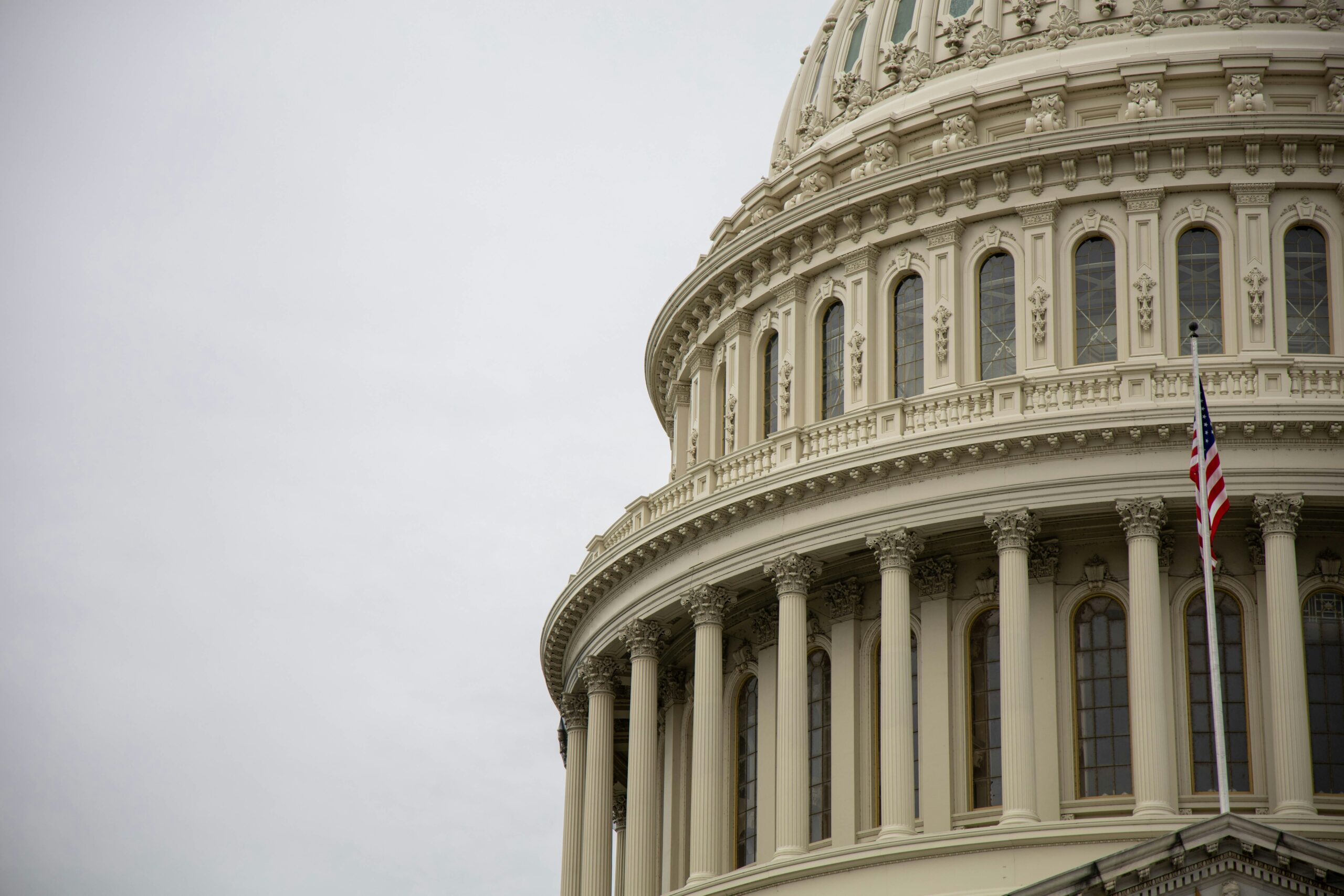
In the News, Press Releases
Jul 09, 2025

In the News, Investments & Financials, Press Releases
Jul 08, 2025

By Stagwell Insights
hello@stagwellglobal.com
Marketing Frontiers is a new series from Stagwell exploring the methods, mediums, and messes modern marketers will grapple with over the next decade as they chart transformation in the discipline. This January, Stagwell is exploring the new frontiers of Augmented Reality.
Retail happens at the convenience of the consumer.
AR can change when and where brands build experiences, the discovery-to-purchase funnel, and how brands navigate the blended shopping experience.
Three trends will lead retail AR: Try Before You Buy, New Discovery Dimensions, and the Gamification of Retail.
The next decade of retail will no longer unfold on a brand’s terms. Digital transformation and the blending of in-person and physical experiences means commerce happens at the consumer’s convenience: on mobile devices, in between meetings, on the subway, and everywhere in between. This pivot will fundamentally change when and where brands build experiences, the discovery-to-purchase funnel, and the need for solutions that adopt the functional convenience of brick-and-mortar retail across any digital platform.
This change is more of an opportunity than a challenge. Mobile AR in retail has unlocked three trends worth capitalizing on for brands seeking creative strategies for adopting AR across their retail experience.
Apparel and home goods have fine-tuned the use of mobile AR to “try before you buy,” allowing consumers to scale clothing sizes to their figure using their cellphone’s cameras or gauge whether a futon will fit in their apartments. Brands that haven’t sought ways to activate mobile AR yet should jump on the trend. Those who have should look for opportunities to push beyond rendering individual products in mixed-reality to build entirely virtual closets and storefronts, in line with the experiments brands like Kohl’s, FaceCake, and Snap have pioneered.
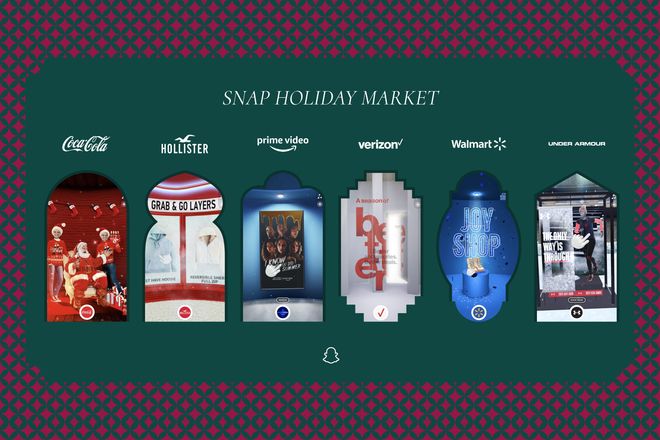
Give consumers the ability to purchase, try on, see reviews, engage with a customer specialist, and more without leaving the comfort of their homes, and you crack the convenience code. Imagine the world of possibilities for more addressable marketing, influencer integrations, and social commerce.
AR isn’t just landscape for apparel and home goods. Food and CPG brands might foray into more AR content experiences that illuminate how their products can be blended to create exciting recipes. Picture Kraft or Nestle emblazoning their packages with QR codes that activate AR chef’s assistants on mobile to teach you the perfect way to blend pantry staples to make a complicated feast.
New Dimension for Discovery
The importance of convenience for consumers in the digital era doubles as an attention and discovery problem. Besieged by brand messaging, consumers have difficulty finding relevant and valuable marketing and promotions when they desire them. Those with smaller marketing budgets struggle to make noise in the din, barred from prime advertising real-estate. AR unlocks a new layer or dimension of marketing that can power intelligent, sustainable content opportunities to aid today’s brands in discovery. Location-specific AR overlays can add flair to major promotions, bring virtual participants closer to the brick-and-mortar experience, and transform common areas like subway trains or city parks into rich canvasses for marketing integrations.
Savvy businesses might partner with regional publishers for guerilla OOH activations, placing QR codes at major city throughways that open up an AR directory of local retailers, shopping centers, and other nearby experiences. This would allow consumers to access an engaging universe of directional content while cutting expenses for regional media distribution and carving out more stages for branded placement and authentic advertising.
The trend towards experiential retail underscores a key point about today’s consumers: digital experiences are never wholly individual. It’s why AR shows such promise for live events and retail. If you can add a layer of shared competition to your retail experiences, you can power deeper consumer engagement. Sporting apps that pit peers against each other to meet fitness goals could enhance that experience with an AR layer that allows for connection with nearby runners, displays local challenges like conquering a particularly steep hill, and rewards users with a coupon or digital assets.
In-store brands might roll out limited-time activations like scavenger hunts to encourage shoppers to engage with as many AR-powered product displays as possible to unlock additional savings at the counter. A retailer might also add an AR layer encouraging added engagement with overstocked items, bring product displays to life with virtual influencers rendered in AR, or use augmented reality content to add local color about in-store products. With experiments in NFTs and other virtual tokens and commodities, brands have an array of new tools at their disposal to encourage and reward hybrid engagement.
Our verdict: now is the time to experiment with and fine-tune brand-relevant strategies for working AR layers through the marketing stack. Mixed reality can be a serious investment. Brands should look for existing partners who can help deliver AR technology via platforms consumers are already engaging with to minimize the start-up costs of a new foray into AR.
The question of budgets and investment aside, our advice about AR mirrors our advice about many new marketing frontiers: before running blindly in their pursuit, ensure the technology is additive to the digital layer of your brand. Ask yourself how AR will add dimensionality or a compelling new flavor of experience to the products and services you provide your consumers. We are bullish that AR’s value is creating shared experiences and enhancing convenience for today’s consumers. If your AR strategy doesn’t accomplish those two goals, you may be better off experimenting with other modern digital marketing tools.
Finally, AR and the industry-wide focus on the metaverse is an opportunity to push innovation and creativity further than ever before. Don’t just replicate content and experiences in AR; redefine them. View augmented reality as an opportunity to unlock new ways to connect and communicate with your brand’s consumer base and zealously chase a more creative future.
In the News, Press Releases
Jul 14, 2025

In the News, Press Releases
Jul 09, 2025

In the News, Investments & Financials, Press Releases
Jul 08, 2025
